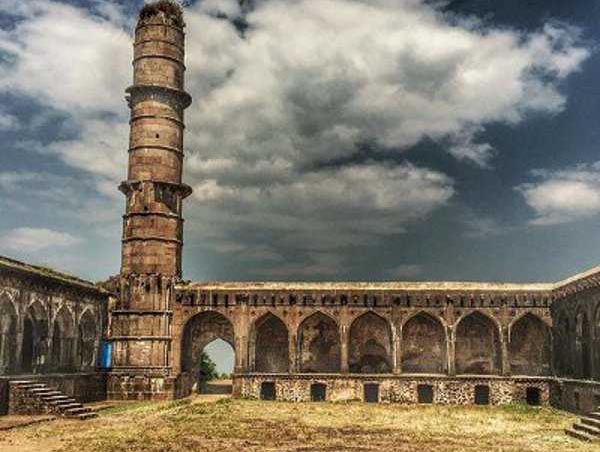Asirgarh Fort

Information on Asirgarh Fort (Burhanpur, Madhya Pradesh) - History & Architecture
The Asirgarh Fort also named as the Asirgarh Qila (in Hindi) is basically an establishment based on the Indian tradition. It is located at the top of the Satpura mountain ranges. The town of Burhanpur of the Burhanpur district is the establishment site of this massive structure. The inhabitants of medieval period in India often named this fort as the "Gateway to South India" or "key to the Deccan". The fort was referred to as one of the important routes that travel through northern region to reach the south-western part of India.
Asirgarh Fort Architecture
Asirgarh fort is made up of sedimentary rocks. The Forts covers a wide area with a temple and mosque. The masjid within the fort is standing on the top of minarets. The Fort has a tower which is tall and made up of granite stone, black in colour to add to the beauty of the fort. There are huge stair steps, while entering the Asirgarh fort. Heavy along with solid granite stone are the reason for the existence of the fort. The fort has three entrances, which are arched. The architectural style used for the construction of the mosque in the fort has great resemblance with the Farouqui style. The other raw material used for the construction of the Fort that adds to its beauty is the solid stones, lime along with lead. All this adds to the architectural significance of the Asirgarh fort of Madhya Pradesh. Moreover, the fort has ponds in its premises, which is green in colour. The fort is magnificent and unique in nature as it is a well created three level structure.
Asirgarh Fort History
The history of Asirgarh fort mainly indicates about the Mughal dynasty and its rulers in India. Though, the fort was established under the control of Hindu rulers but it had been passed through several eras of Mughals, Holkars, Britishers and many more empires. It also told us about the derivation of its name. Asa Ahir was the founder of this huge structure. He was a ruler relating to the Hindu caste prevailing in India. He named this fort as the Asa Ahir Garh. Later, three alphabets from the middle of his name were removed to form the new name of this fort. Hence, Asirgarh fort is the new name selected by him.
The first two centuries of the fort were peacefully controlled by the Tak clans. The Mughal era in India changed the whole scenario of this fort. It can also be said as the golden period of the fort. During the reign of Raja Ali Khan better called as Adil Shah Mughal emperor Humayun captured the state of Gujarat in 1536 AD and came closer to the fort. The actual trouble aroused when the great Mughal emperor ordered Adil Shah to surrender him the fort. Unable to face the great force of Akbar, Adil Shah had no other option but to drop the title of Shah from his name and accept the supremacy of Akbar. However, Bahudur Khan, who was the heir of Adil Khan didn't admit the domination of Akbar and made the fort self-governing again. Unfortunately, Khan was defeated by Akbar and the fort was captured by him in 1600 AD.
Asirgarh Fort Tourism Importance
The fort is well connected through airlines and railways. People visit this fort to enjoy the beauty of nature, historical evidences and mostly to visit the temple and the mosque. Another tourist attraction near the fort is the cemetery established by the Britishers.
- Andaman Nicobar Monuments
- Andhra Pradesh Monuments
- Assam Monuments
- Bihar Monuments
- Chhattisgarh Monuments
- New Delhi Monuments
- Goa Monuments
- Gujarat Monuments
- Haryana Monuments
- Himachal Pradesh Monuments
- Jammu and Kashmir Monuments
- Karnataka Monuments
- Kerala Monuments
- Madhya Pradesh Monuments
- Maharashtra Monuments
- Odisha Monuments
- Punjab Monuments
- Rajasthan Monuments
- Tamil Nadu Monuments
- Telangana Monuments
- Uttar Pradesh Monuments
- West Bengal Monuments